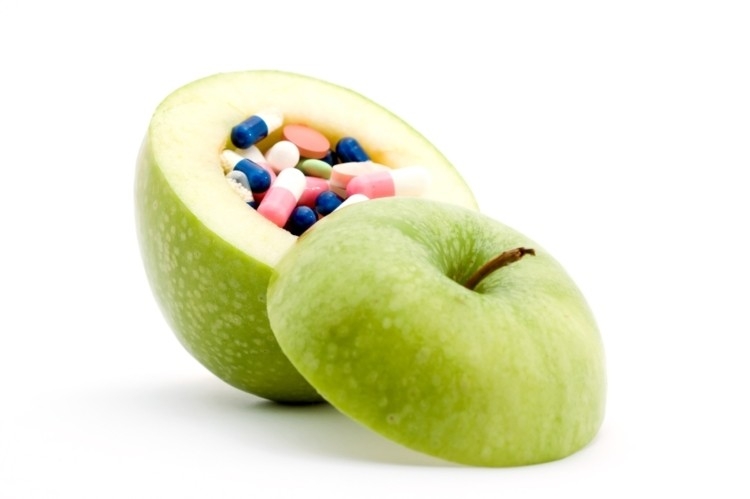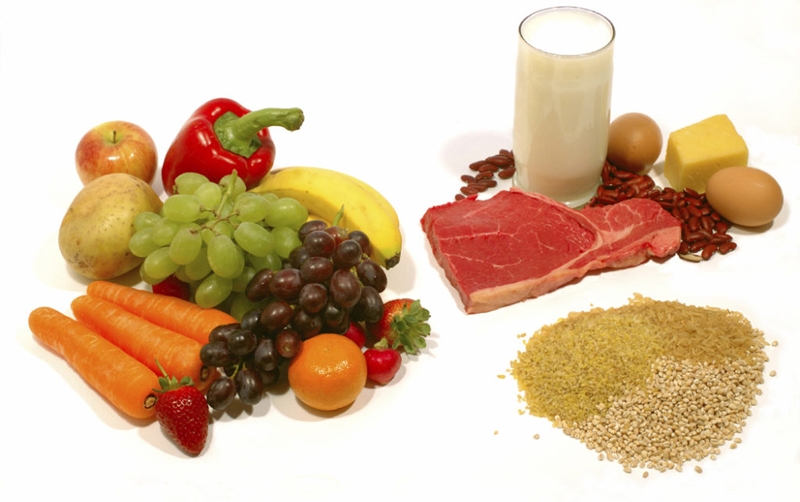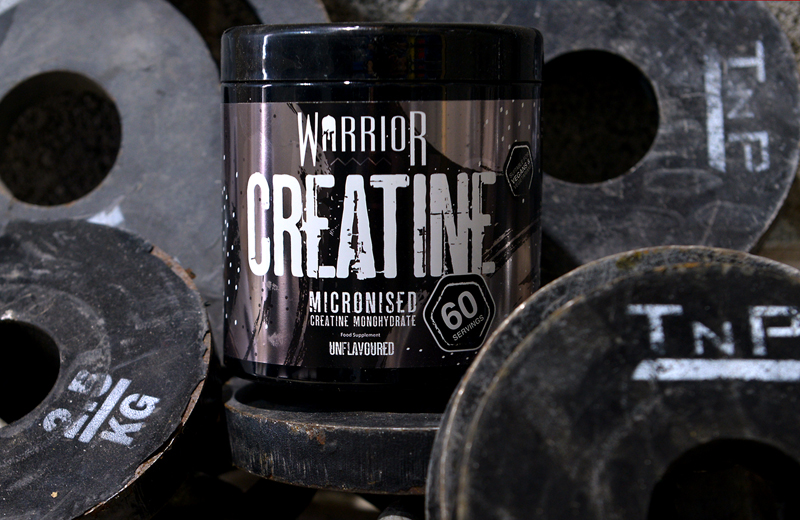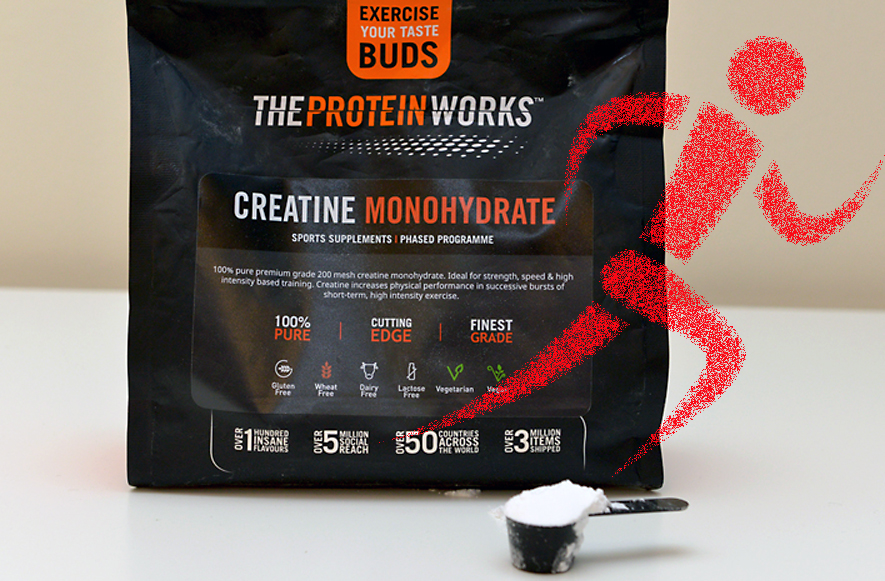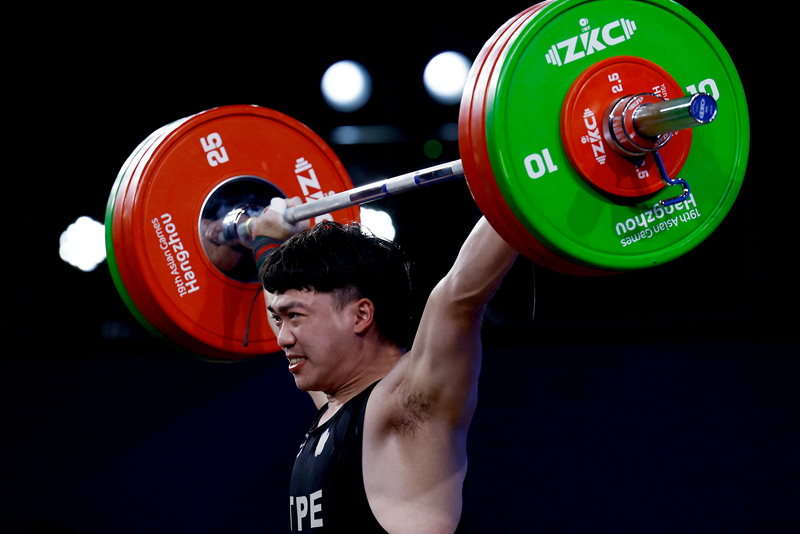You are viewing 1 of your 1 free articles. For unlimited access take a risk-free trial
Optimising your day-to-day diet: why knowledge is power!

Andrew Hamilton explains why many athletes need to pay greater attention to the dietary basics, and how this can be achieved
Punch “sports nutrition” into any internet search engine and you’ll get a deluge of results from sports supplement companies and retailers, all offering products claiming to enhance sport performance. But while there have been great technological advances in sports nutrition products, these products do not automatically guarantee optimum nutrition for athletes in hard training. Indeed, an excessive reliance on products such as carbohydrate and protein powders, fluid replacement drinks and ergogenic aids may help to foster a ‘performance from a bottle’ mentality – an assumption that today’s high-tech sports nutrition formulations and supplements can guarantee optimum performance.However, this assumption is flawed. Relying heavily on sports nutrition products may actually lead to a poorer basic diet quality, because many athletes simply assume that they no longer need to worry about eating high quality natural foods, leading to a reduced intake of key nutrients. A poorer, low-nutrient diet is undesirable for a number of reasons – not least because such diets are associated with lowered immunity and a generally reduced resilience of the body to withstand the day in, day out rigours and cumulative stresses of training.
Sort the basics!
Ensuring your day-to-day diet is as nutritious and healthy as possible should be the cornerstone of any nutrition plan, and therefore your NUMBER ONE priority for performance. While sports drinks and supplements have their place – especially when training volumes and intensities increase – your everyday diet is more important. You can think of this as a ‘hierarchy of needs’ pyramid, where your day-to-day diet forms the pyramid base, and the extra tiers of nutrition are added only once the layer below is in place (see figures 1 and 2).Athletes are more concerned with performance than the sedentary population, and there are few athletes that aren’t aware of the important role of nutrition in helping to maximise performance. You might therefore assume that most athletes consume a pretty well sorted day-to-day diet, especially given the abundance of nutritional information freely available online and in other media.
However, a number of studies across a range of sports over the past 25 years suggest otherwise. Indeed, the evidence suggests that not just recreational, but also many elite athletes are failing to meet their basic dietary requirements – ie the pyramid base. Table 1 summarises just a few of these findings, while box 1 provides possible explanations as to why this seems to be the case.
FIGURE 1: THE ‘HIERARCHY OF NUTRITIONAL NEEDS’

A good, healthy diet should be fundamental in any sports nutrition plan. Higher levels of the pyramid should only come into play once the levels below have been addressed.
FIGURE 2: THE FOOD PYRAMID GUIDE

TABLE 1: SOME STUDIES INVESTIGATING ATHLETES AND THEIR DIETARY INTAKES
TABLE 1 SOME STUDIES INVESTIGATING ATHLETES AND THEIR DIETARY INTAKES
| Athlete type | Assessment(s) made | Key nutritional findings | Reference |
|---|---|---|---|
| Elite male swimmers | 4-day food record, a fasting blood sample and body composition measurements. | Over 50% of the swimmers were deficient in calcium. Insufficient carbohydrate intake. | Int J Sport Nutr Exerc Metab. 2004 Feb;14(1):81-94 |
| Female judo athletes | 3-day food records; measures of immunity. | Iron and calcium failed to meet the recommended daily allowance. Slight immunosuppression, which was correlated with low dietary intakes of iron, B1 and niacin. | Nutrition. 2002 Jan;18(1):86-90 |
| 78 female karate, handball, basketball and running athletes | 7-day food intake records (with all subjects weighing food portions). | None of the athletes consumed the recommended daily intake for magnesium (which have since been revised upwards!). The handball athletes also failed to meet their daily needs for copper. | Int J Sport Nutr. 1999 Sep;9(3):295-309 |
| 161 elite figure skaters | 3-day food records. | In excess of 25% of daily energy intake derived from sugars (current recommendation is that no more than 5% of calorie intake should come from refined sugars). | J Am Diet Assoc. 2001 Mar;101(3):325 |
| Highly-trained female cyclists | 3-day weighed food record and blood tests. | Insufficient carbohydrate intakes. Average daily intakes for folic acid, magnesium, iron, and zinc were sub optimum. More than one-third of the cyclists failed to consume even two thirds of the recommended daily intake for vitamins B6, B12, E and the minerals magnesium, iron, and zinc. | Am Diet Assoc. 1989 Nov;89(11):1620-3 |
| Nationally-ranked female volleyball athletes | 3-day weighed food records, activity logs and blood tests. | Average intakes for folic acid, iron, calcium, magnesium and zinc were all less than recommended. Both carbohydrate and protein intakes were found to be inadequate for their activity levels, while three athletes presented with gross iron deficiency. | J Am Diet Assoc. 2002 Sep;102(9):1293-6 |
| 324 highperformance athletes | 3-day dietary records | Average calorie intakes were below that recommended for activity levels - mainly as a result of inadequate carbohydrate intake. | Clin J Sport Med. 2009 Sep;19(5):405-11 |
| 72 elite female athletes | Food-frequency questionnaire | 65% of the athletes failed to meet carbohydrate intake recommendations. Significant proportion of participants failed to meet the estimated average requirement for folic acid, calcium, magnesium, and iron. | Int J Sport Nutr Exerc Metab. 2010 Jun;20(3):245-56 |
| 25 endurance athletes | 3-day dietary recalls | Inadequate carbohydrate intake. Dietary deficiencies of folic acid, vitamins C and D, magnesium, calcium and potassium were also observed. | Rocz Panstw Zakl Hig. 2013;64(2):143-8 |
| 24 adventure racers | 7-day food diaries and blood tests. | Men: carbohydrate intakes were borderline, and failed to meet their requirements for magnesium, zinc and potassium. Women: diets fell short of calcium and vitamin E needs. | Nutrition. 2007 May;23(5):40411 |
| 553 Dutch elite and sub-elite athletes | 24-hour dietary recalls and nutritional supplement questionnaires | Majority had sub-optimum vitamin D intakes. Non-users of dietary supplements were particularly at risk for low intakes of vitamins B1, B2, B3 and vitamins A, C and selenium. Mean iron intake was sub optimum in a substantial group of women - both supplement users and non-users. The use of sport nutrition products contributed only slightly to micronutrient intake. | Nutrients. 2017 Feb 15;9(2). pii: E142. doi: 10.3390/nu9020142 |
BOX 1: WHY DO SOME ATHLETES STRUGGLE WITH DIETARY BASICS?
Why is it that so many athletes end up consuming diets that are sub optimum? One reason is that despite the nutritional information available, some athletes still appear to lack the knowledge required to help them make healthy food choices. For example, one study evaluated the nutrition knowledge and dietary practices of four groups of womenJ Am Diet Assoc. 1992 Mar;92(3):299-305:- 18 postmenopausal women
- 14 college-aged dancers
- 13 members of a college track team
- 14 non-athletic college women

All the subjects completed a personal information questionnaire, a 24-hour food recall questionnaire, a food-frequency questionnaire and a nutrition knowledge test. The athletes scored significantly higher in the knowledge test than the dancers (26.5 vs. 22.2 points). However, they scored less well than the postmenopausal women (28.5 points) and the nonathletic college women (29.7 points). Even though this was an early study and information is more easily available now, it nevertheless suggests that the assumption that athletes are likely to be more knowledgeable than the rest of the population is incorrect.
A later study compared the nutrition knowledge and dietary composition of Italian athletes and non-athletes Int J Sport Nutr Exerc Metab. 2002 Jun;12(2):207-19. Sixty athletic and 59 non-athletic adolescent females completed 3-day food recall and nutrition knowledge questionnaires. Although the athletes reported higher carbohydrate, iron and fibre intakes and consumed lower fat, the intakes of calcium, iron, and zinc were still less than recommended dietary allowance for these nutrients. Furthermore, while the athletes gave a slightly higher rate of correct answers on the nutrition knowledge questionnaire than nonathletes, the difference was very small (77.6% vs. 71.6%).
Another study examined the dietary practices, attitudes and physiological status of collegiate freshman football players in Atlanta and reported that over half the group believed (incorrectly) that protein supplements were necessary for muscle growth and development, and that protein was the primary source of energy for muscleJ Strength Cond Res. 2001 Nov;15(4):507-13.
It’s clear from these and other studies that while the age, type of sport and cultural/social background of athletes plays an important role in determining the quality of diet, many athletes are still confused about what constitutes a healthy and nutritious diet required to support training. There’s also evidence that even when athletes are more knowledgeable about, and have more positive attitudes towards nutrition, they still fail to follow it up with improved dietary practiceJ Am Diet Assoc. 1985 May;85(5):573-6.
Assessing nutritional status
How good is YOUR day-to-day diet? If you’re not sure, don’t worry – you’re not alone! As table 1 and box 1 suggest, many athletes - at all levels from recreational to elite - lack either the knowledge or strategies to implement the optimum basic dietary fundamentals. The fact of the matter is therefore that if you really want to be sure the correct dietary fundamentals are in place, you have to carry out some kind of dietary assessment. After all, if you don’t know where you are now, how will you know what steps are required to get you to where you want to go?Assessing nutritional status accurately and drawing firm conclusions is no easy task. For example, studies that rely on athletes ‘self-reporting’ their dietary intake are beset with potential problems; it’s a well-known phenomenon that what we eat and what we think we eat may not be quite the same (see box 2)!
These difficulties can be minimised if assessments are supplemented by biochemical testing for nutrient status; ie as well as examining your food intake and dietary patterns to see whether there are likely to be nutrient shortfalls, you also measure actual nutrient levels (for example in blood/sweat) to see if these are actually borne out in practice. If a nutrient shortfall is detected by both criteria, you can be pretty sure that you really are short of that nutrient. The problem is that biochemical testing (as opposed to simple dietary screening) is both time-consuming and expensive, and it may not reveal an awful lot more information over and above a thorough dietary analysis.
BOX 2: THE CHALLENGE OF DIETARY ASSESSMENT
There are a number of ways of assessing dietary intake (see table 2). While there is currently no gold standard, by far the most common method that is applied in sports nutrition research and practice is the food record (FR); where all food and drinks that are consumed are recorded by the participant for a specified number of days - typically three to seven days.Why the variation in number of days? Well, there is something of a balancing act to be performed; accurately writing down all your food and drink intake for seven days will provide a more accurate representation than three days, as it helps smooth out the day-to-day variations typically observed in most diets. However, a 7-day recording period is a far more onerous for the task for the athlete.
In my own experience, even the keenest athlete loses enthusiasm after four or five days of having to carefully weigh/measure and write down absolutely everything they consume in minute detail – particularly when snacks and meals are frequent. This can lead to short cuts as the week goes on, leading to inaccurate data. Additional challenges that make this process harder for the athlete include an increased burden from recording large food intakes, frequent eating occasions, potentially irregular meal patterns, difficulty estimating large portion sizes, and the contribution of sports foods and supplements.
Gathering together a food record places a substantial burden on participants to document information truthfully and accurately. But studies show that this doesn’t always happen. Significant discrepancies between self-reported intakes and actual intakes have been reported in a number of studies across a range of age-groups and a variety of sports, with substantial differences (11–44%) being observedBr. J. Nutr. 2001, 85, 415–430 Curr. Opin. Clin. Nutr. Metab. Care 2003, 6, 539–549. The most likely reasons for this include conscious or subconscious exclusion of foods consumedAm. J. Physiol. 2001, 281, E891–E899 J. Sports Sci. 2002, 20, 391–397 and even changing the usual food intake or dietary patterns due to the dietary intervention itselfJ. Appl. Physiol. 1993, 74, 2909–2914!
Using food records also requires the dietician/nutritionist to code the data correctly – ie translate what is written down into a nutritional format that can be properly analysed. However, recent technological developments involving the use of food photography or electronic images, wearable cameras, and various on-line tools and applications have been shown to improve participant compliance by reducing the burden of recording and enhance the accuracy of data recordedProc. Nutr. Soc. 2016, 76, 283–294.
TABLE 2 METHODS OF ASSESSMENTS – PROS AND CONS
| Description | Pros | Cons | |
|---|---|---|---|
| Written food records | Dietary records are typically obtained for 3 or 4 days. (sevenday records have historically been used as the gold standard for validating other methods). | *Provides quality data on the type and amount of food consumed, especially if the record is completed as the foods are consumed.*Makes the participant aware of what they are eating, which can be seen as an advantage | *Research shows that the quality of the record actually declines in relation to the number of days recorded.*Food records require literate, motivated subjects and place a high burden on the participants.*The process of recording food intake can lead participants to change their food-intake patterns. |
| 24-hour dietary recall | Subject recalls to an interviewer what they have consumed in the past 24 hours | *Requires only short-term memory, and if the recall is unannounced, the diet is not changed.*Quick and easy, and the subject burden is less in comparison with food records.*Appropriate for use with low-income and low-literacy populations because the subjects do not need to read or write to complete the recall. | *Potentially high inaccuracy due to the inability of a single day’s intake to describe the typical diet.*Success also depends on the memory, cooperation, and communication ability of the subject. |
| Food frequency questionnaires | Lists specific foods and asks the participant if they eat them and if so how often and how much they eat. | Can be used to provide estimates of usual dietary intake over time (typically 6 months to 1 year). | *FFQs are not able to accurately assess energy intake – a critical measure for athletes to understand.*Lists need to be culture-specific – eg those provided to a Chinese and American subject would need to reflect different cultural food choices |
PRACTICAL ADVICE: METHODS OF ASSESSMENT
So you want to carry out an assessment of your diet; what’s the best way to go about it?*ONLINE ANALYSIS - One ‘DIY’ option is to carry out an online nutrition analysis, some of which are free. However, this can be quite daunting. As well as being time consuming, there’s also the challenge of finding unbiased information, as many of these sites are sponsored by companies with a financial interest. However, there are websites that provide a useful, verifiable, objective nutritional analysis (and don’t try to sell you something). As a rule of thumb, websites with the extensions ac.uk, .edu, .gov and (often) .org will contain unbiased nutritional information that is factually accurate and based on good science. You can also look into who sponsors the site; if a well-known organisation or association endorses or manages the site, it’s more likely to be legitimate.
*USE FREE SOFTWARE - Another option is to download your own free software, which can be used on your laptop/PC. An example of one of the better free options is Xyris’s ‘FoodChoices’, which can be downloaded for free (www.foodchoices.com. au/students/stu_download.html) providing it’s for your own personal use and not for commercial use. Although aimed at Australian and New Zealand consumers, the foods database is comprehensive and relevant to most Western consumers. Using this software, you can:
- Analyse your food diaries, meal plans and recipes
- Compare your food diary or meal plan to the nutrient reference values (for Australia and New Zealand).
- Compare your food diary or meal plan to your own nutrition goals.
- See the contribution of each food to the nutritional value of a food diary, meal plan or recipe.
- Search for foods high or low in a specific nutrient
*SMARTPHONE APP - A fourth option is to use a smartphone app. Although this might seem a bit basic, recent software has come a long way and the right app can produce good results. A recent study surveyed over 1,000 sports dieticians from five different countries who both used dietary analysis apps and recommended them to athletesJMIR Mhealth Uhealth. 2015 Jan-Mar; 3(1): e7. By far the most popular app was ‘Myfitnesspal’ (see figures 3 and 4). And while there were a few concerns about the accuracy of some of the data produced by the app, the overwhelming perception was that for athletes themselves, these dietary analysis apps were very effective in helping them to assess their diets (figure 5). On the basis of these findings, investing in a smartphone app such as Myfitnesspal seems a good choice for athletes serious about analysing and improving their diet.
FIGURE 3: MYFITNESSPAL SCREENSHOT
FIGURE 4: POPULARITY OF DIETARY ANALYSIS APPS AMONG SPORTS DIETICIANS JMIR Mhealth Uhealth. 2015 Jan-Mar; 3(1): e7

FIGURE 5: EFFECTIVENESS OF SMARTPHONE DIETARY ANALYSIS APPS JMIR Mhealth Uhealth. 2015 Jan-Mar; 3(1): e7

Summary
Your day-to-day diet is the cornerstone of good sports nutrition. However, research shows that many athletes of all backgrounds and abilities fall short of ensuring a high-quality diet. If you suspect your diet is lacking, analysing your current eating patterns is the best first step to improving it. Although the traditional methods of dietary analysis using food records are potentially tricky, there are a number of practical high-tech options to help you analyse your diet successfully, and make the positive changes you need.FIVE RECOMMENDATIONS FOR DAY-TO-DAY NUTRITION
Before you think about dietary analysis, check you’re following these five basic ‘good practice’ recommendations first:- PLENTY OF FLUIDS - No matter how much you drink during your training or racing, if you start less than fully hydrated as a result of poor dietary habits, you’re going to struggle. You should aim to drink a total (ie from all sources) of around 2-3 litres of fluid per day on non-training days. On training days, this should be increased to accommodate additional fluid losses; as a rule of thumb, if your urine colour is never darker than a pale straw colour, you’re doing okay!
- ADEQUATE AMOUNTS OF CARBOHYDRATE - Unprocessed carbohydrates (starchy foods such as whole grain breads, cereals, pasta, rice, potatoes, beans etc) are your body’s 5-star fuel for training and racing, so (unless you’re training to improve fat burning or lose weight) these foods should form a key part of the diet, especially in the run-up to a race (55-60% of your calorie intake). For an active athlete consuming around 3,000kcals per day, this means 1600-1800kcals of carbohydrate per day, equating to around 400-450g of carbohydrate per day. Obviously however, carbohydrate needs will rise and fall in line with training volumes. Sugars are also a type of carbohydrate but to avoid blood sugar swings and energy dips, sugary carbohydrates are best consumed only sparingly - preferably during and immediately after exercise, when muscles are best able to absorb carbohydrate rapidly.
- SUFFICIENT PROTEIN - Exercise breaks down muscle tissue so adequate protein is vital for muscle recovery/ repair as well as growth and strength development following training. The best sources of protein are low-saturated fat sources - lean cuts of meat, white fish, skimmed milk and low-fat dairy produce (ie yoghurts and cheeses). Nuts, seeds and oily fish are also good sources of protein because the fats present are mainly the healthy, essential fats (omega-3 and omega-6 fats). Research suggests that endurance athletes need more protein than was originally thought - around 1.6-2.0g of protein per kilo of bodyweight per day – in order to prevent muscle tissue breakdown during harder periods of trainingAppl Physiol Nutr Metab. 2014 Feb;39(2):219-25. This means a 70kg cyclist for example would require around 110-140 grams per day.
- PLENTY OF FRUITS AND VEGETABLES - Fresh fruits and vegetables are not only excellent sources of vitamins, minerals (see below) and fibre, they’re also packed full of protective, health-giving antioxidants – often referred to as ‘phytochemicals’. Studies have shown that these phytochemicals can help to ward off illness and disease and some can even help protect muscles from exercise-induced damage and reduce post-exercise muscle sorenessJ Int Soc Sports Nutr. 2010 May 7;7(1):17!
- SUFFICIENT LEVELS OF NUTRIENTS (VITAMINS AND MINERALS) - Vitamins and minerals are needed to facilitate the tens of thousands of biochemical reactions required to keep your body performing at its peak. All natural, unprocessed foods are rich in these nutrients. By contrast, junk, fatty, processed, refined, sugary foods (and alcohol) contain plenty of calories but little in the way of nutrients, which is why you should try and limit these junk calories to less than 10% of your total calorie intake.
Newsletter Sign Up
Testimonials
Dr. Alexandra Fandetti-Robin, Back & Body Chiropractic
Elspeth Cowell MSCh DpodM SRCh HCPC reg
William Hunter, Nuffield Health
Newsletter Sign Up
Coaches Testimonials
Dr. Alexandra Fandetti-Robin, Back & Body Chiropractic
Elspeth Cowell MSCh DpodM SRCh HCPC reg
William Hunter, Nuffield Health
Keep up with latest sports science research and apply it to maximize performance
Today you have the chance to join a group of athletes, and sports coaches/trainers who all have something special in common...
They use the latest research to improve performance for themselves and their clients - both athletes and sports teams - with help from global specialists in the fields of sports science, sports medicine and sports psychology.
They do this by reading Sports Performance Bulletin, an easy-to-digest but serious-minded journal dedicated to high performance sports. SPB offers a wealth of information and insight into the latest research, in an easily-accessible and understood format, along with a wealth of practical recommendations.
*includes 3 coaching manuals
Get Inspired
All the latest techniques and approaches
Sports Performance Bulletin helps dedicated endurance athletes improve their performance. Sense-checking the latest sports science research, and sourcing evidence and case studies to support findings, Sports Performance Bulletin turns proven insights into easily digestible practical advice. Supporting athletes, coaches and professionals who wish to ensure their guidance and programmes are kept right up to date and based on credible science.
